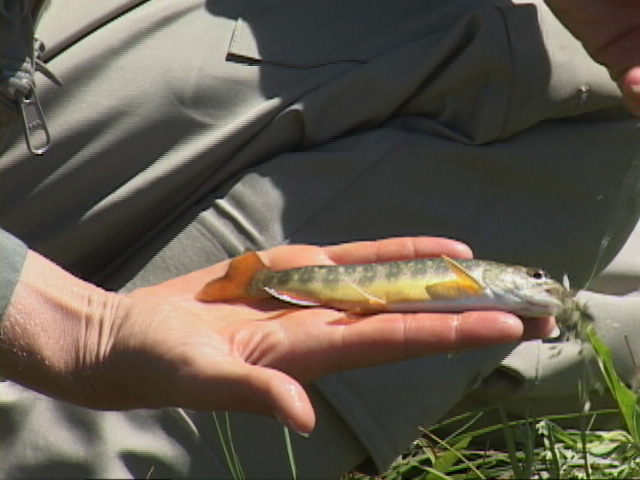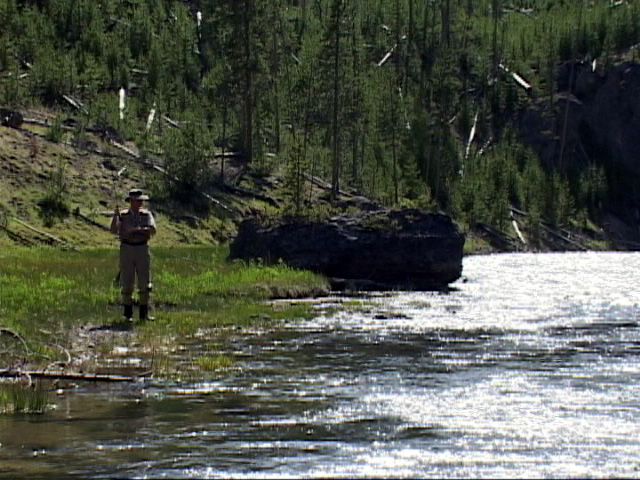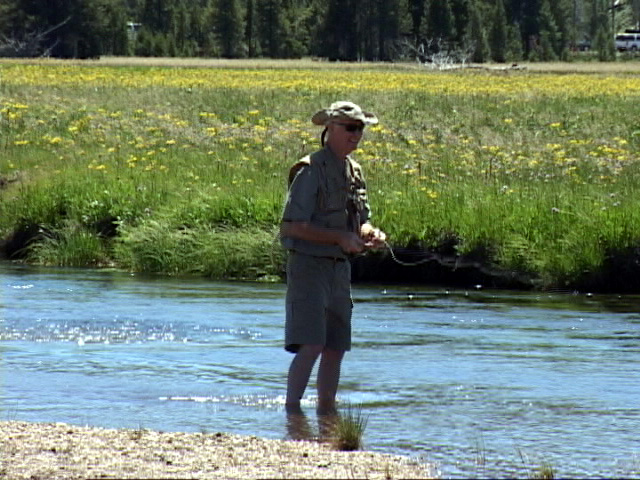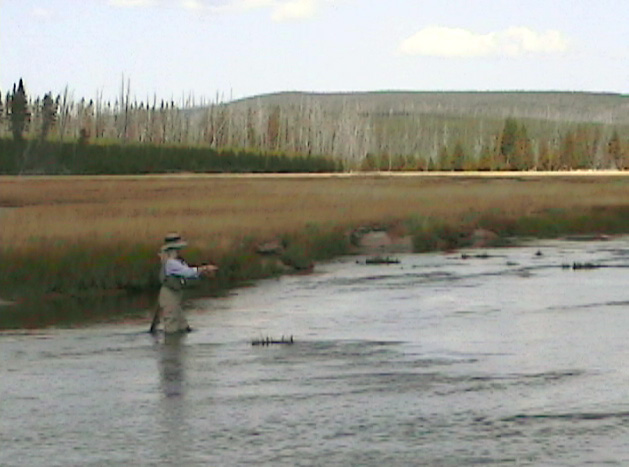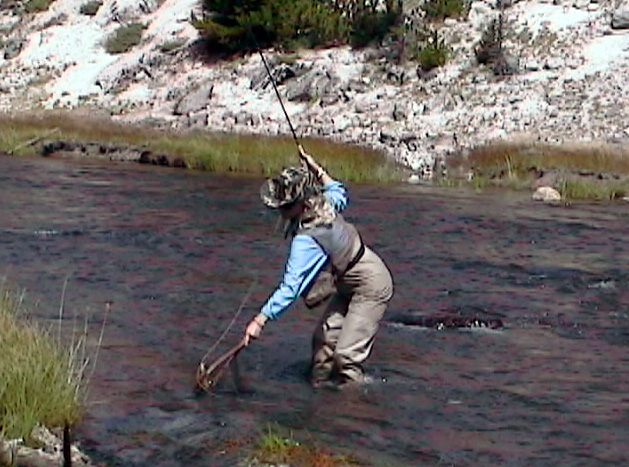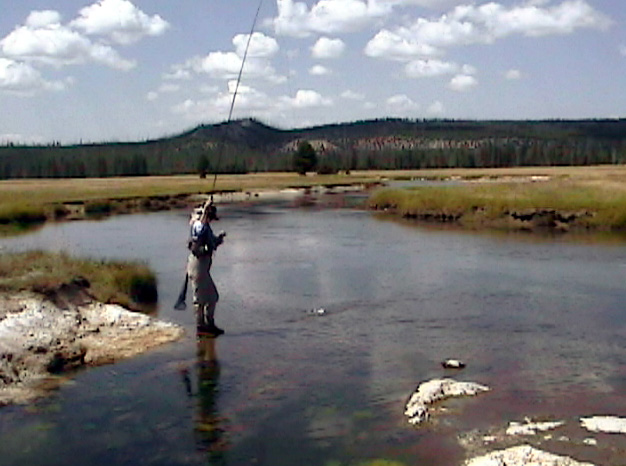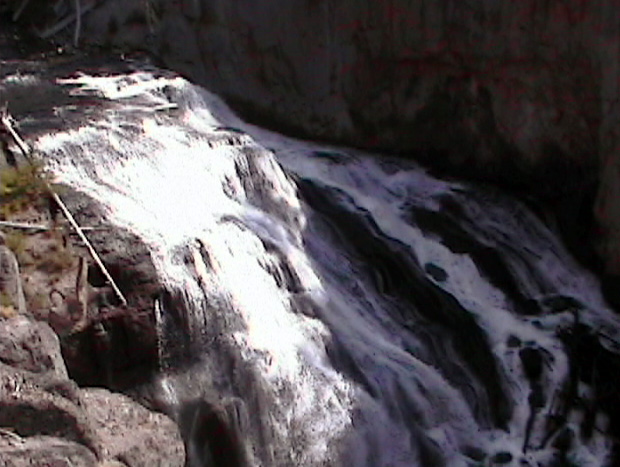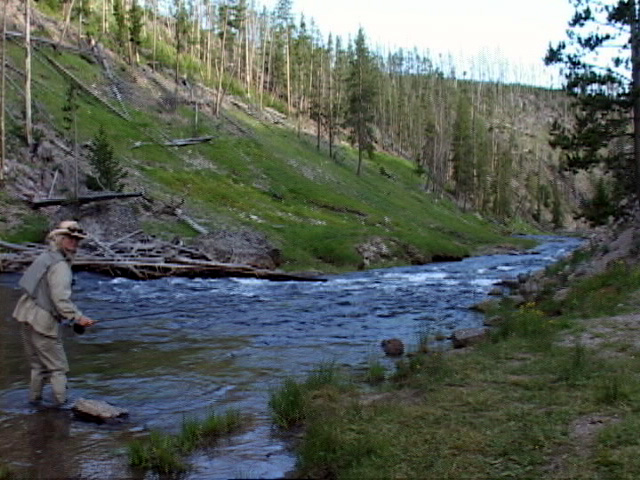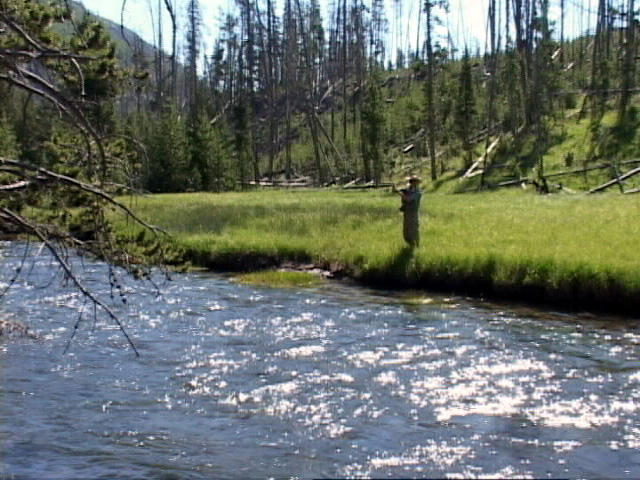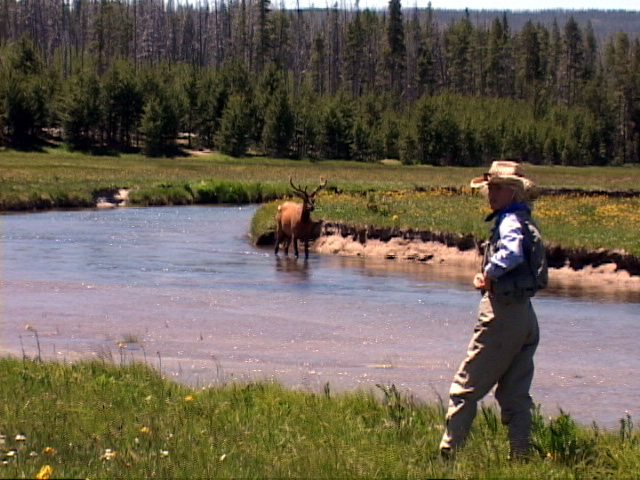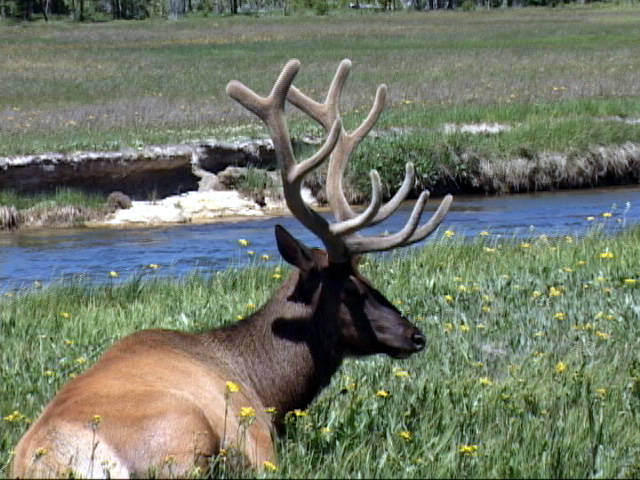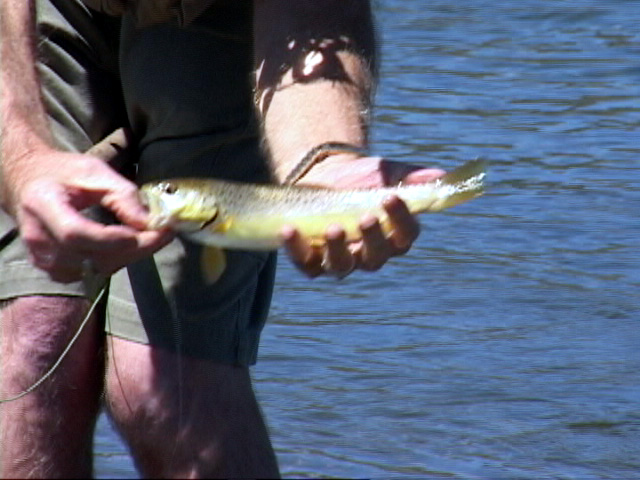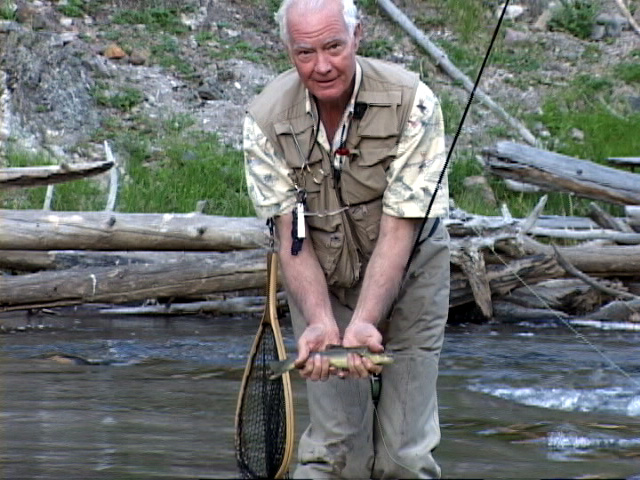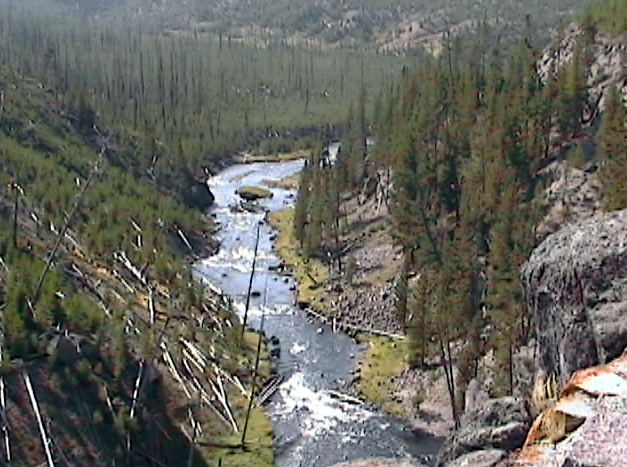
water is quite a change from the
meadow sections.
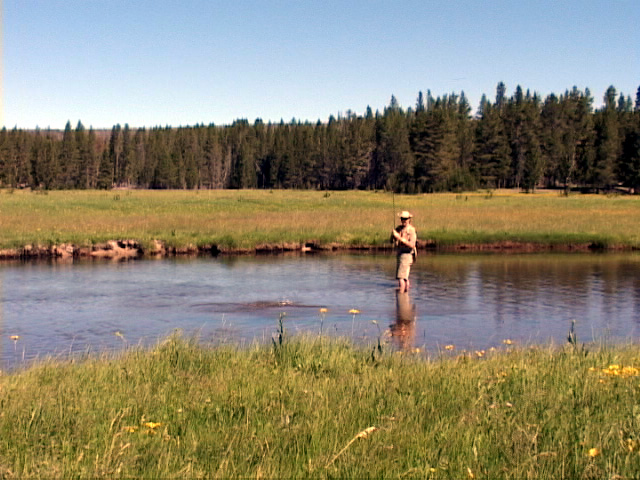
not be a more beautiful meadow
stream to fish.
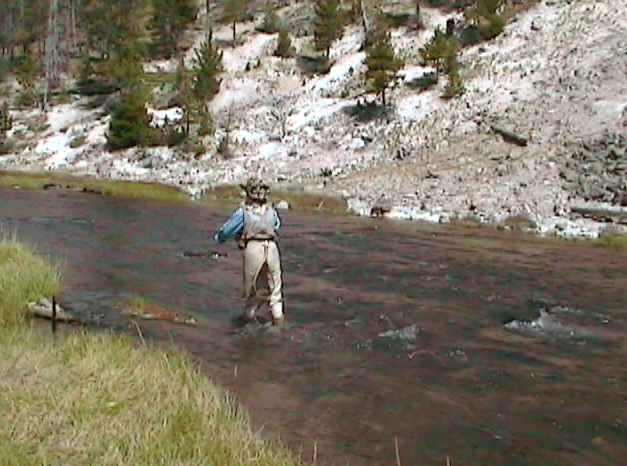
eager fish, convenient and fun to
fish.
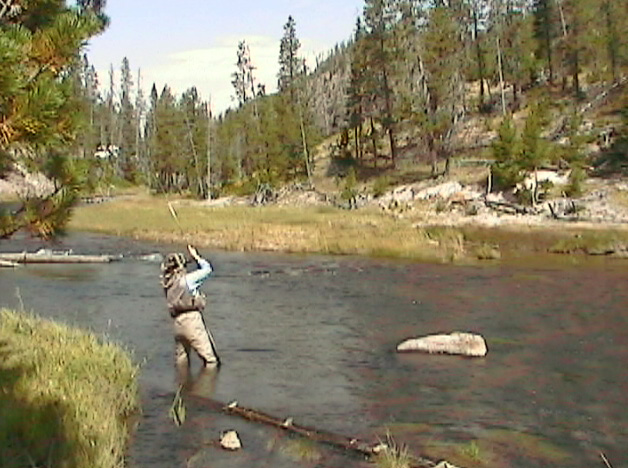
Gibbons flows through yet another
meadow just prior to helping form
the Madison River.
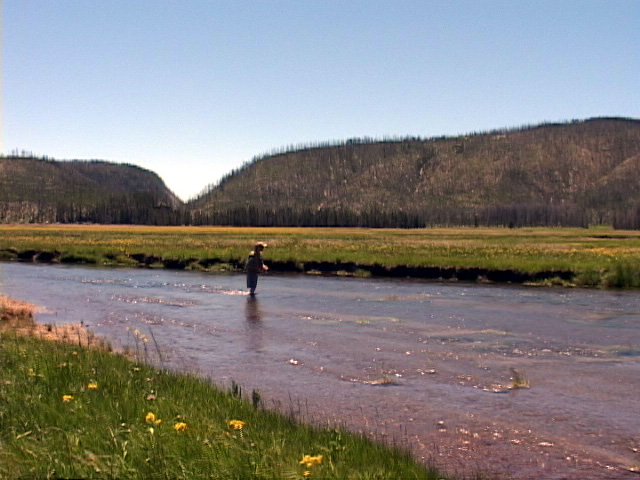
meadow section of the Gibbon
River.
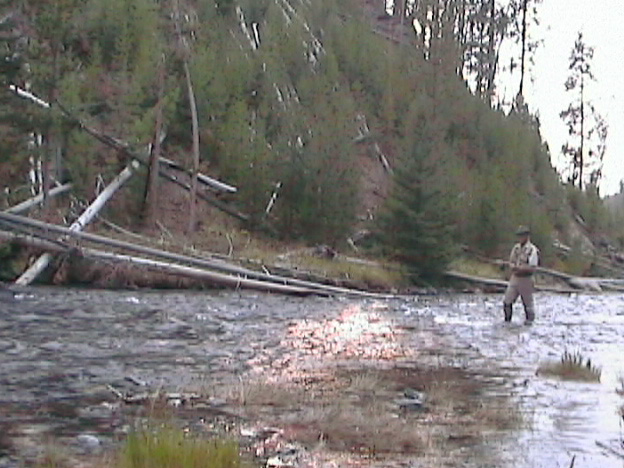
River varies greatly. One can find
just about any type of water there
is in a trout stream.
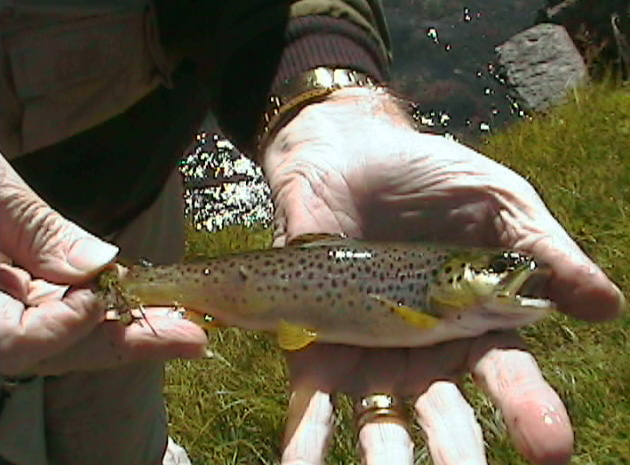
population of brown trout. This
one will grow up over the years to
challenge another angler.
Upper Gibbon River:
The Gibbon River starts out from Grebe Lake on a plateau as a very small stream that flows into Wolf Lake. Below Wolf Lake the stream increases its speed through steeper gradients and flows into the Virginia Meadows. From the Virginia meadows it flows over the Virginia Cascades into the Norris Meadows. The upper end of the river has some rainbow trout. The lower end of the stream prior to reaching Norris Meadows contains lots of small brook trout. The section of the river above Norris Junction can be accessed at several places along the Norris-Canyon Road.
Click here for More Information on the Gibbon River
Norris Meadows:
In Norris Meadows, the stream widens and winds back and forth through the meadow. Rainbow and brook trout are present in the stream at Norris. From the Norris Meadow the Gibbons River flows through an area of rough pocket water for a mile before it reaches Elk Park where the fish grow a little larger.
Elk Park:
These fish range from 10 to 14 inches. Elk Park is a huge meadow. The river winds back and forth through the park creating shallow areas on one side of the stream and deeper, undercut banks on the other side of the stream. The long slow moving sections of the stream are connected by short sections of riffles. Access to Elk Park is provided by from the Grand Loop Road.
Gibbon Meadows:
From Elk Park the Gibbon River flows a mile into yet another large meadow, the Gibbon Meadows. It is also easily accessed from the Grand Loop Road. Rainbow and brown trout reach upwards to 16 inches with some browns growing to a much larger size in this meadow.
Gibbon Meadows to Gibbon Falls:
The Gibbon River leaves the meadow and flows for 7 miles to Madison Junction along the Grand Loop Road. The river passes through some steep gradients down too and over Gibbon Falls.
Gibbon Falls to Lower Meadows:
Below the falls, the river flows through a canyon section of faster pocket water. Hiking a hundred yards or so from the nearby Grand Loop Road will access most of the lower section of this stream.
Lower Gibbon Meadows:
The lower end of the Gibbon flows through yet another meadow. There it empties its water along with the Firehole River, to form the Madison River. Access to this area is provided from the Madison Picnic Area.
Species:
The trout in the canyon section of the river are not as large as those found in the meadows but they are plentiful, aggressive and fun to catch. During the fall months, some of the spawning brown trout move all the way from Hebgen Lake upstream through the entire section of the Madison River in the park and into the lower Gibbon River. Large trout can be taken during this time all the way up to the Gibbon Falls.
Comments:
The Gibbon River is one of the best streams in Yellowstone National Park yet it is usually placed down the list of most angler’s preferences. It offers several different types of water and various species of trout, even grayling.
Click here for More Information on the Gibbon River
Click Below for Gibbon River Hatch Charts:
Spring
Summer
Fall
Copyright 2012 James Marsh
